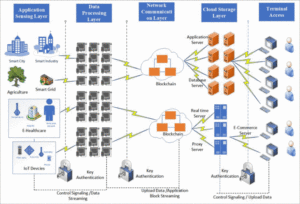The concept of “Smart Cities” emerged to describe cities capable of resolving urban difficulties while being environmentally conscious. Smart cities utilize emerging and evolving technologies to assist cities in acquiring advantages through technical innovation. When finding solutions to the problems that accompany technological innovation, the Internet of Things (IoT) is becoming increasingly important in implementing smart solutions.
The IoT enables smart and sustainable environments by incorporating cutting-edge technologies to create people-centric cities and industries. IoT requirements and limits raise many issues, including device connectivity, data security, identity and access control, hardware security, and data protection. In an article published in IEEE Internet of Things Magazine, researchers present a systematic approach to depict the role of IoT in the ages. Various security challenges, real-time incidents, and countermeasures are discussed in the article to address the major difficulties of sustainable environments and highlight the potential visions of smart cities and industries.
Technology Resources in Smart Cities
The evolution of smart cities has been considered since 1994, including digital virtual, ubiquitous, intelligent cities, and many more. A smart city’s primary purpose is to offer advanced services that bring a quality lifestyle to the residents and visitors while simultaneously emphasizing environmental sustainability. The goal is to increase people’s quality of life by improving the efficiency and quality of government and commercial services using Information and Communication Technologies (ICT).
As the researchers note, the primary notion of a smart city is resource conservation, such as electricity management. Similarly, automated streetlights, technology-driven traffic management, waste-water recycling strategies, and rainwater harvesting should be implemented to preserve water. 5G and 6G technologies enable decentralized, cooperative environmental sensing applications made possible by blockchain technology. These abilities can be used to develop and protect the smart city environment for the green economy. With blockchain and 6G networks, it would be less centralized, and resources would be shared more.

A conceptual smart-city architecture with underlying IoT technologies.
The authors outline smart cities’ evolution, stakeholders, and technical requirements before delving into many smart cities' challenges.
Safety, Security, and Privacy Issues
Every IoT device in today’s technologically evolved world is linked to the Internet, increasing the possibility of compromised confidential information. To guard against any form of data leakage attack, strong authentication, access control, intrusion detection, and privacy preservation mechanisms for IoT connections are necessary.
As millions of devices connect online to share data, authentication has been identified as a serious security problem in the IoT. Various security challenges were identified to ensure the security and privacy of the systems involved in smart city projects. While some challenges have been solved, according to the researchers, a few remain. The researchers highlight smart city adversarial capabilities, privacy leakage in data sensing, privacy in data storage, and trustworthy and dependable control as areas to watch.
Future Research Directions
Smart cities evolved to enable seamless and secure communication between people and services. Various technological advancements brought numerous advantages but also opened doors to adversarial acts. According to the article, future research directions should include:
- Mobility of the cloud-edge fog devices to enable excessive support to IoT environments.
- Security and privacy are never-ending challenges in IoT environments—future generations will depend on advanced network capabilities.
- Time-sensitive services have also been extensively investigated for 5G and 6G networking systems. Keeping these services at low latency may incur system overheads beyond IoT resource constraints.
- The edge paradigm is equipped with a decentralized architecture. The trust management services should be developed according to the application requirements.
The authors end the article by stressing the importance of ensuring IoT systems’ integrity, secrecy, and authenticity using secure authentication procedures.
Interested in learning more about IoT and Smart Cities? IEEE offers continuing education with the IEEE Guide to the Internet of Things (IoT) and Smart Cities Technologies: Transformation of Cities course programs to smartly implement digital tools into your organization.
Interested in acquiring full-text access for your entire organization? Full articles available with purchase or subscription. Contact us to see if your organization qualifies for a free trial.





